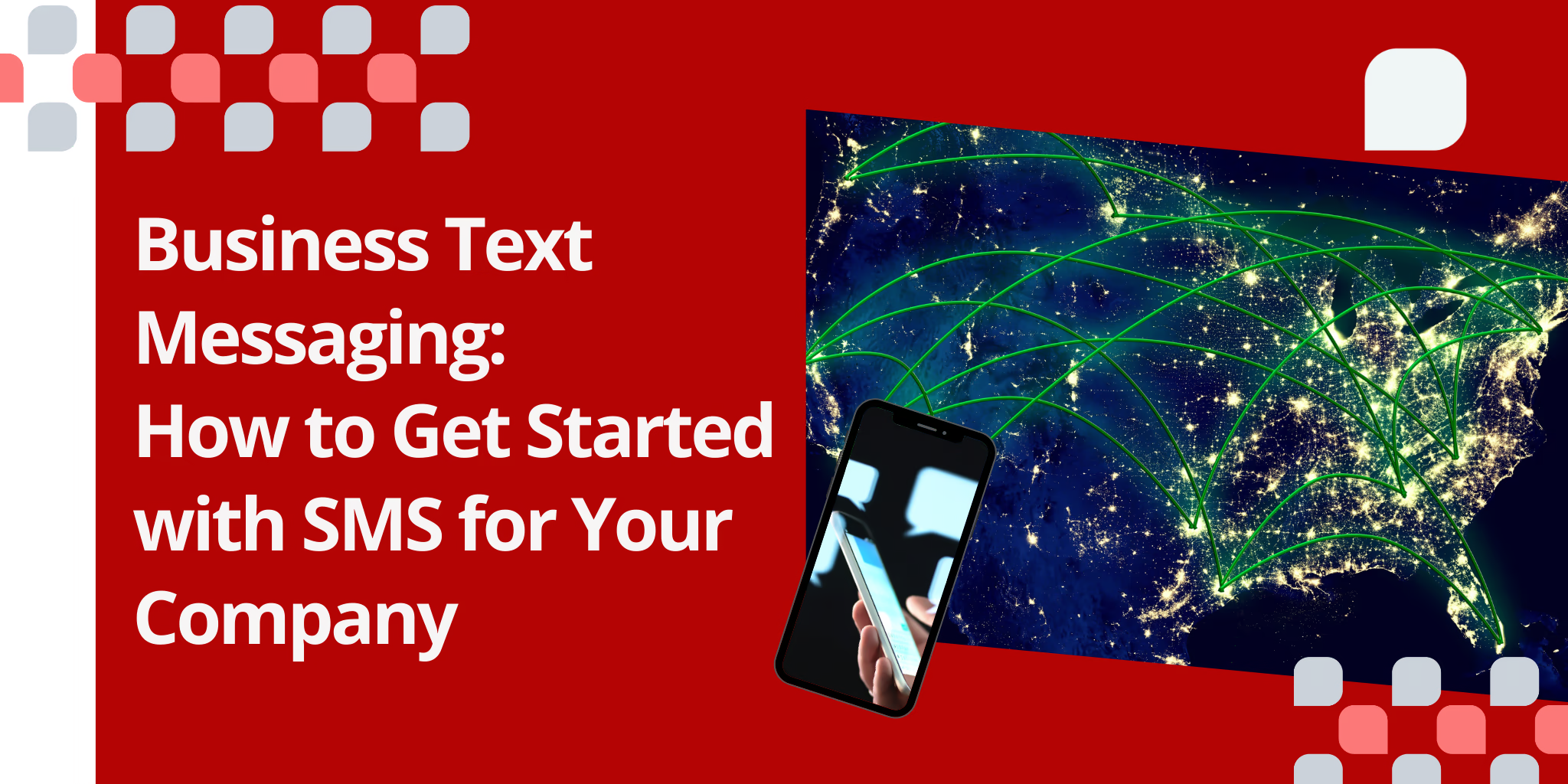- What Is Business Text Messaging?
- Why Business Text Messaging Matters
- How Does Business Text Messaging Work?
- Getting Started with Business SMS
- Ways Businesses Can Receive Text Messages
- Regulations to Be Aware Of
- Best Practices for Business Text Messaging
- Leveraging Business Text Messaging with Kixie
In today’s fast-paced world, effective communication is crucial for businesses to thrive. While email has been a staple for professional correspondence, it often lacks the immediacy that modern consumers expect. Enter business text messaging—a powerful tool that enables quick and efficient communication with customers, clients, and employees alike. In this comprehensive guide, we’ll explore what business text messaging is, how it works, and how your company can leverage it to boost customer engagement and drive sales.
What Is Business Text Messaging?
Business text messaging, also known as business SMS or business texting, involves using SMS (Short Message Service) to send and receive text messages for various professional purposes. This form of communication is not limited to promotional messages; it’s a versatile channel used for:
- Appointment reminders
- Customer support
- Marketing campaigns
- Order updates
- Internal team communications
With an open rate nearing 98%, text messages offer a direct line to your audience, ensuring your messages are seen and read promptly. Unlike emails that might get buried in crowded inboxes, texts are typically read within minutes of receipt, making them ideal for time-sensitive information.

Why Business Text Messaging Matters
- High Engagement Rates: Text messages boast a 45% click-through rate (CTR), significantly higher than the average 6-7% CTR for emails.
- Customer Preference: According to recent studies, 70% of consumers have opted to receive texts from businesses, and many prefer the convenience of two-way conversations via SMS.
- Versatility: SMS can be used across various industries and for multiple purposes, from marketing promotions to critical alerts.
How Does Business Text Messaging Work?
Business SMS operates through platforms specifically designed for professional communications. Here’s a breakdown of how it functions:
- Dedicated Business Numbers: Businesses use special phone numbers—either 10-digit long codes (10DLC), toll-free numbers, or short codes—to send and receive texts.
- SMS Service Providers: Companies partner with SMS service providers or use software platforms like Kixie, Twilio, or SimpleTexting to manage their messaging campaigns.
- Sending Messages:
- Bulk Messaging: Send mass texts to a large audience for promotions or announcements.
- Automated Messages: Schedule texts for appointment reminders or follow-ups.
- Two-Way Communication: Engage in real-time conversations with customers for support or sales inquiries.
- Receiving Messages: Customers can reply directly to your texts, enabling seamless interaction.
Getting Started with Business SMS
Step 1: Choose the Right SMS Platform
Select a business texting service that suits your needs. Consider factors like ease of use, features, scalability, and integration capabilities with your existing systems.
- Popular Options:
- Kixie: Offers a comprehensive sales engagement platform with integrated calling and texting.
- Twilio: Provides robust APIs for custom messaging solutions.
- SimpleTexting: Known for its user-friendly interface and marketing features.
Step 2: Obtain a Business Texting Number
Decide on the type of number that fits your communication strategy:
- 10DLC Numbers: Standard 10-digit numbers approved for business messaging.
- Toll-Free Numbers: Begin with 800, 888, etc., and are ideal for customer service.
- Short Codes: 5-6 digit numbers used for high-volume messaging (more expensive and require approval).
Step 3: Build Your Contact List
- Opt-In Compliance: Ensure customers have consented to receive your texts.
- Segment Your Audience: Group contacts based on demographics, purchase history, or engagement levels for targeted messaging.
Step 4: Craft Your Messages
- Be Clear and Concise: SMS limits you to 160 characters per message.
- Include a Call-to-Action (CTA): Encourage recipients to take the next step, whether it’s visiting your website or confirming an appointment.
- Personalize When Possible: Use the recipient’s name or reference past interactions to enhance engagement.
Step 5: Schedule and Send
- Timing Is Key: Send messages at times when your audience is most likely to engage.
- Automation: Utilize automated workflows for timely messages like order confirmations or reminders.
Step 6: Monitor and Optimize
- Track Performance: Use analytics to measure open rates, CTRs, and conversions.
- Adjust Strategies: Refine your messaging based on performance data to improve results.

Ways Businesses Can Receive Text Messages
Receiving messages is just as important as sending them. Here are methods businesses use:
- Dedicated SMS Inbox: Most SMS platforms provide an inbox where you can view and respond to incoming messages.
- Email Forwarding: Set up texts to be forwarded to your email, allowing you to manage communications from one place.
- CRM Integration: Integrate your SMS platform with your Customer Relationship Management (CRM) system to keep track of customer interactions.
- Short Codes and Keywords: Use short codes with specific keywords that customers can text to interact with your business (e.g., texting “JOIN” to subscribe).
Regulations to Be Aware Of
Compliance is crucial in business texting to protect both your company and your customers.
1. Obtain Consent
- Opt-In Requirement: Only send messages to customers who have explicitly agreed to receive texts from you.
- Document Consent: Keep records of when and how consent was obtained.
2. Provide Opt-Out Options
- Easy Unsubscribe: Include instructions like “Reply STOP to unsubscribe” in your messages.
- Honor Opt-Outs Promptly: Immediately remove contacts who opt out to avoid violations.
3. Adhere to 10DLC Compliance
- Registration: If using 10DLC numbers, register your business and campaigns with carriers to ensure compliance and improve deliverability.
- Content Guidelines: Avoid prohibited content and follow carrier rules for messaging.
4. Time Restrictions
- Appropriate Hours: Send messages during acceptable hours to respect recipients (typically between 8 AM and 9 PM in their time zone).
5. Data Protection
- Secure Information: Protect any personal data you collect and comply with regulations like GDPR or CCPA if applicable.
Best Practices for Business Text Messaging
- Personalization: Customize messages to make customers feel valued.
- Relevance: Send messages that are pertinent to the recipient’s interests or past interactions.
- Frequency: Avoid over-messaging to prevent annoyance or high opt-out rates.
- Testing: A/B test different messages to see what resonates best with your audience.
- Compliance Checks: Regularly review your practices to ensure ongoing compliance with regulations.
Leveraging Business Text Messaging with Kixie
Kixie offers a powerful platform to enhance your business communication through SMS:
- Integrated Calling and Texting: Manage all your customer interactions in one place.
- Automation Tools: Set up automated SMS campaigns and follow-ups.
- CRM Integration: Sync communications with systems like HubSpot, Salesforce, and more.
- Analytics and Reporting: Gain insights into your messaging performance to drive improvements.
- Compliance Support: Stay on top of regulations with Kixie’s built-in compliance features.
Get Started Today
Ready to transform your customer communication? Schedule a free demo with Kixie and discover how business text messaging can elevate your engagement strategies.



